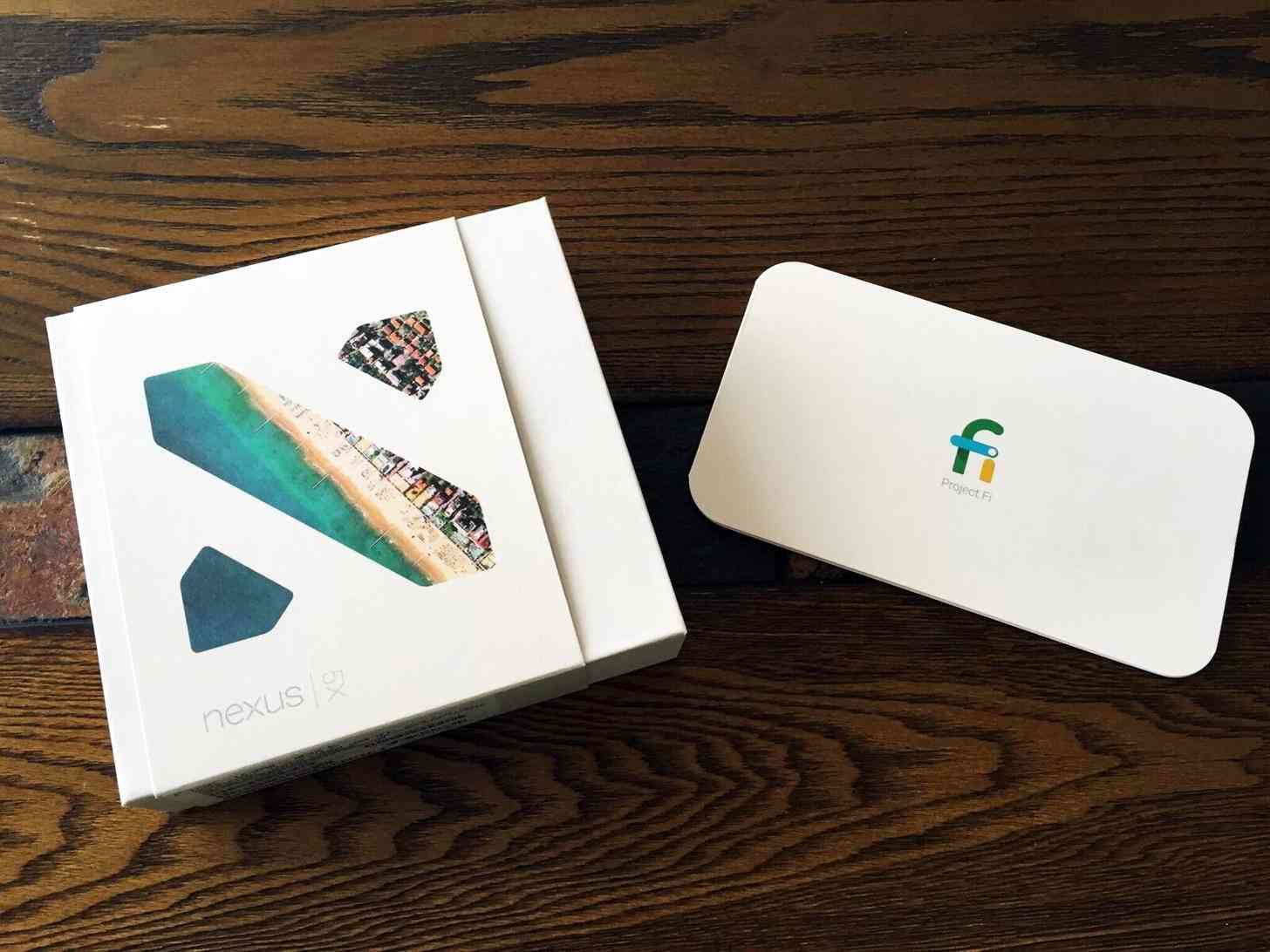
I’ve written a couple of articles recently expressing my enthusiasm for the amount of sales surrounding some popular Android devices. One deal in particular, the $199 Nexus 5X with Google’s Project Fi service, was too good for me to pass up. I ended up pulling the trigger and ordering a 5X, which arrived yesterday. Intrigued by both the device and the service, I figured a write-up of the unboxing and first impressions were in order.

The box was small and lightweight, and contained the device itself, 15W USB Type-C charger, a Type-C to Type-C USB cable, Project Fi SIM card, SIM removal tool, Safety and Warranty booklet, and a card stating you can have 90 free days of Google Play Music. No frills or filler here. I think the only downside is that this is my first device that uses Type-C, so I have to purchase either a separate cord or an adapter to get it to plug into my computer or a charger that normally connects with USB 2.0.
Set-Up was simple enough. When you pop the SIM card in, activation with Project Fi already sets up on its own when you power on the device. You may have to wait a while to get a number, but mine came through within 15 minutes.
You go through the rounds of setting up Wi-Fi, and then I was prompted to download and update the device. After the initial update I’ve had 3 additional security updates to do while conducting set-up, as well as recommendations to update all Google apps. Performing all of these updates seems to have run the phone a little warm on the back. Nothing too bad, but it is noticeable.
I also opened the Project Fi app to make sure there weren’t any additional steps that needed to be done, but as it turns out there was. In order to activate “complete coverage” the service needed to disconnect for a minute, and then it was reconnected. The app covers how much data you have used, your current plan, billing information, and support – pretty much everything you need to ensure smooth service.
After all was said and done, I was ready to rock n’ roll.

There have been countless reviews on the LG Nexus 5X as it isn’t a new device by any means, but this is my first time really getting a good look at the device. It’s not too big with a 5.2-inch display and very light. I’m not a big fan of the slight protruding camera on the back, but it’s nothing that a case couldn’t fix (something that I desperately need on my phone anyway, or else it just feels like I’m going to drop it and break it).
I didn’t think I would be a big fan of the fingerprint sensor on the back of the device after having used my iPhone’s Touch ID sensor on the front with my thumb for so long. However, adjusting to this difference has been a non-issue.
Software-wise, things are excellent. It has been a long time since I’ve used an Android with such little bloatware, and the device from the get-go is so… clean. That’s the best word I can think of to describe it. My most recent Android experience was testing the Galaxy Note 5 with Samsung’s Ultimate Test Drive promotion, and while the phone was nice it was way overcrowded with bloatware (despite the decrease in bloatware that has come to Samsung’s TouchWiz somewhat recently). The Nexus 5X has no overcrowding issues whatsoever.
However, I was a little baffled to see that my initial available space was half that which was promised. I bought the 16GB model because it was cheapest and I’m a total cheapskate, but I suppose I did not fully realize how much space the Android operating system took up. My available space is 10.67GB, and the pre-installed apps take up 2.02GB all on its own, leaving me about 8GB of storage. Definitely wishing I had shelled out a little more money for more storage, but also disappointed that advertised storage space is still an issue here.
While I can only blame myself for not conducting the proper research on this when I very well know better, I can only assume that most people – especially those who aren’t interested in smartphones at all beyond the surface – are the same way when it comes to assuming that when a device is advertised as having 16GB of storage that you are offered 16GB of storage; at the very least, you should be able to use more than half of it.
Performance of the Nexus 5X is smooth. I opted not to move any of my files from my iPhone to this one and start off with a clean slate. I’ve read that some people have experienced lag with the 5X, but so far I haven’t experienced anything noticeable. The camera boots up and performs just fine, multiple apps can run without a hitch, and I’ve downloaded a total of 2 additional apps (Netflix and Facebook) that also seem to do alright. However, I haven’t really done much else with the phone yet, so I can’t speak for what happens once more storage gets used.
I’ve done a little bit of customization, but nothing too crazy yet. I’ve already popped over to XDA once or twice to see what’s available for the 5X right now, but I’m going to use stock Android (and probably dabble with Android N) before delving into rooting again.
Project Fi works just fine around my house and around the city. Project Fi relies heavily on Wi-Fi, but switches between Sprint and T-Mobile when no Wi-Fi is available (depending on which has the stronger signal, wherever you are). Overall, I’m happy with the purchase so far, although there’s still time for buyer’s remorse. But for $199 ($230 with Project Fi service) I'd say this is a worthwhile venture.